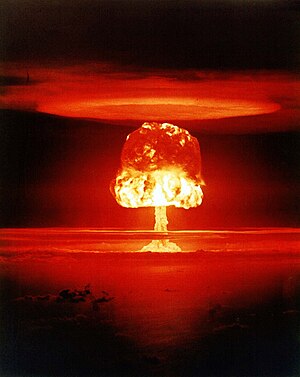 Image via Wikipedia
Image via WikipediaForty-five years ago today, the US Air Force suffered a real-life Broken Arrow when a hydrogen bomb was lost in a mid-air collision over rural Spain. The so-called Palomares Incident occurred on Jan. 17, 1966 when a KC-135 airborne refueling tanker collided with a B-52G bomber that was carrying four Mk28 hydrogen bombs. The entire crew of the KC-135 was killed, three of the seven men aboard the B-52G died, and all four hydrogen bombs separated violently from the destroyed aircraft.
This is a classic Broken Arrow event, wherein US-owned nuclear weapons are lost in a fashion that does not lead directly to nuclear war. (The film
Broken Arrow actually depicts an
Empty Quiver incident, wherein a nuclear weapon is stolen by hostile forces. The thieves attempt to disguise the theft as a mere Broken Arrow. The result is a Nuc Flash, as the stolen nuke is detonated.)
Two of the Palomares hydrogen bombs detonated their conventional explosive components upon impact with the ground, spreading plutonium fallout over a 2-square-kilometer area of Spain. A third bomb landed intact in a riverbed. The fourth bomb was lost when its descent parachute miraculously deployed after the collision, allowing the weapon to drift into the Mediterranean Sea.
It took nearly three months for a massive naval expedition to locate what was a essentially a metal cylinder 22 inches wide by 170 inches long in the vast expanse of the Mediterranean. Fortunately, the US Navy had some serious math geeks around to help them increase their odds of tracking down the nuclear needle in the aquatic haystack.
What geekworthy technique was used to locate the lost Palomares hydrogen bomb?
 Image via WikipediaFive years ago, on the 20th anniversary of the Challenger disaster, I wrote this Geek Trivia column. Half a decade later, I modestly pass this bit of history on to my readers again.
Image via WikipediaFive years ago, on the 20th anniversary of the Challenger disaster, I wrote this Geek Trivia column. Half a decade later, I modestly pass this bit of history on to my readers again.




